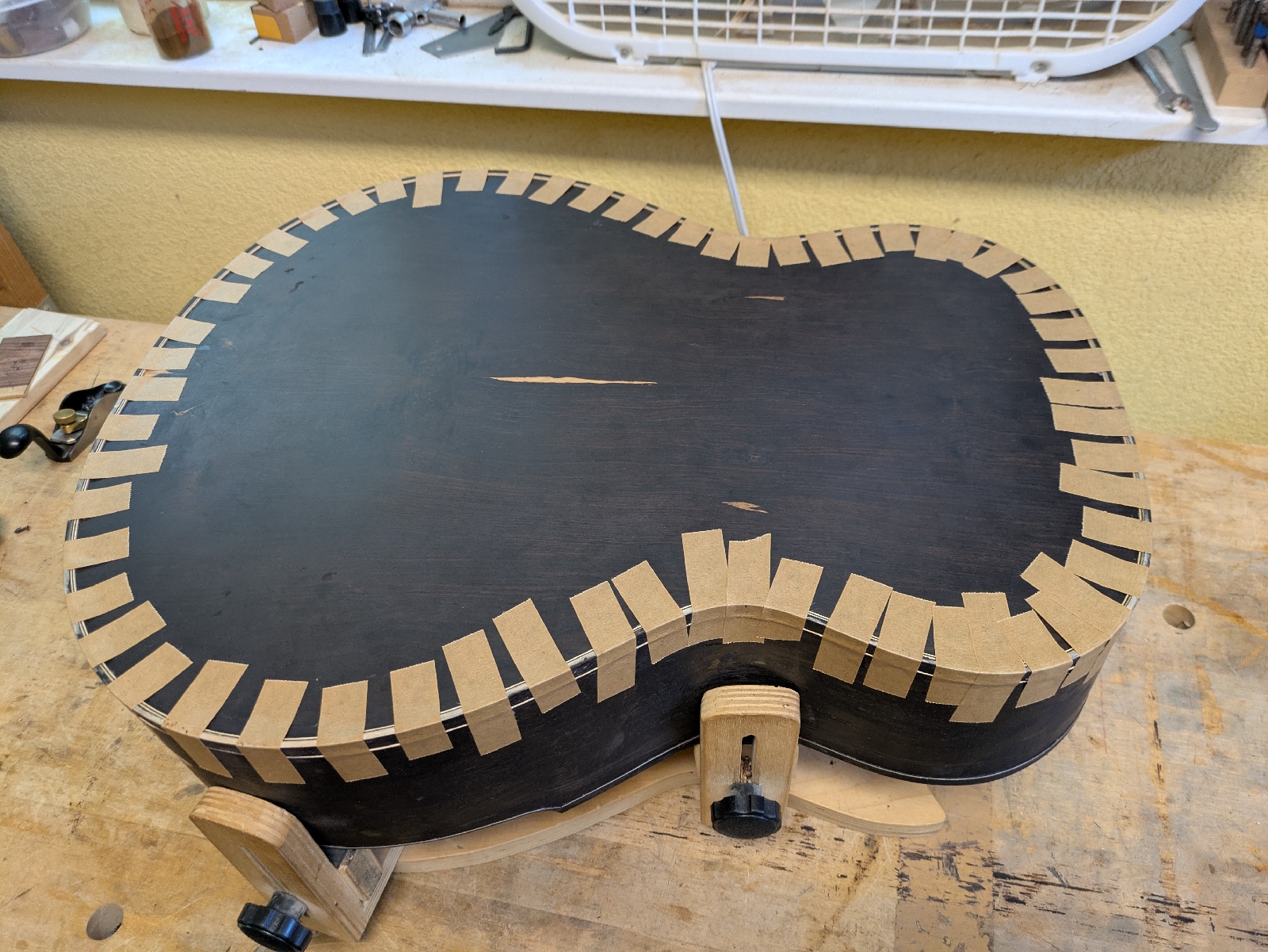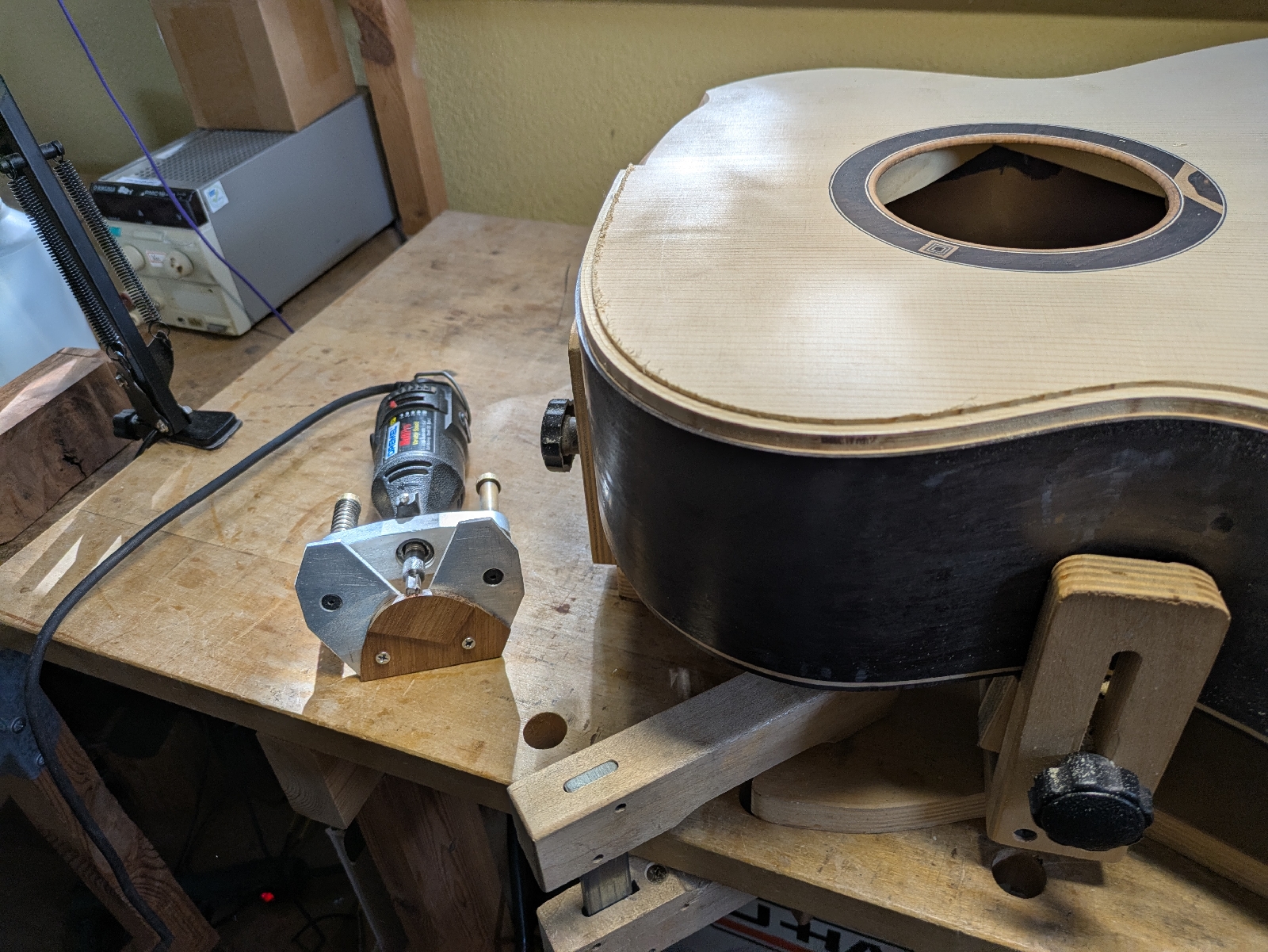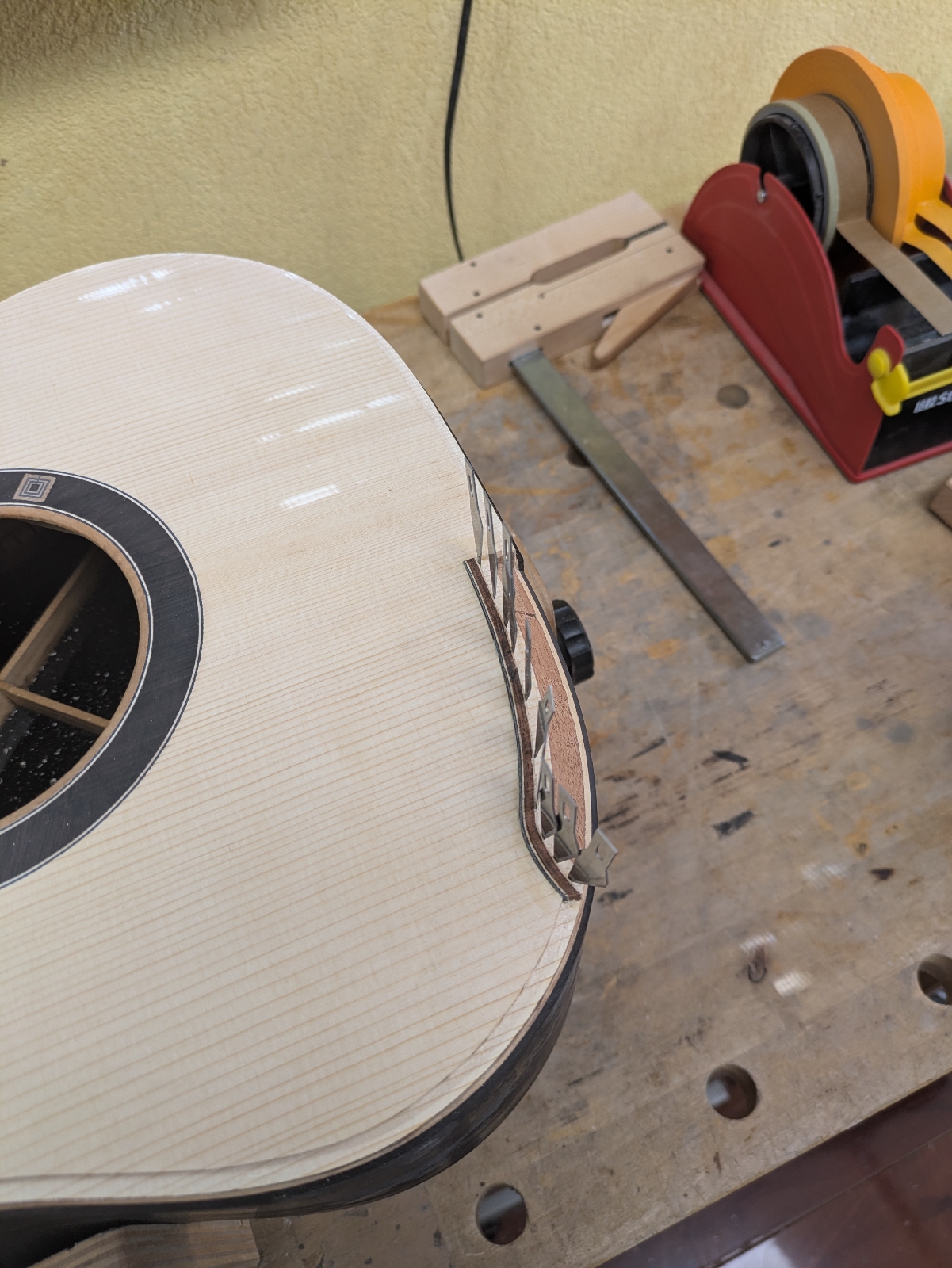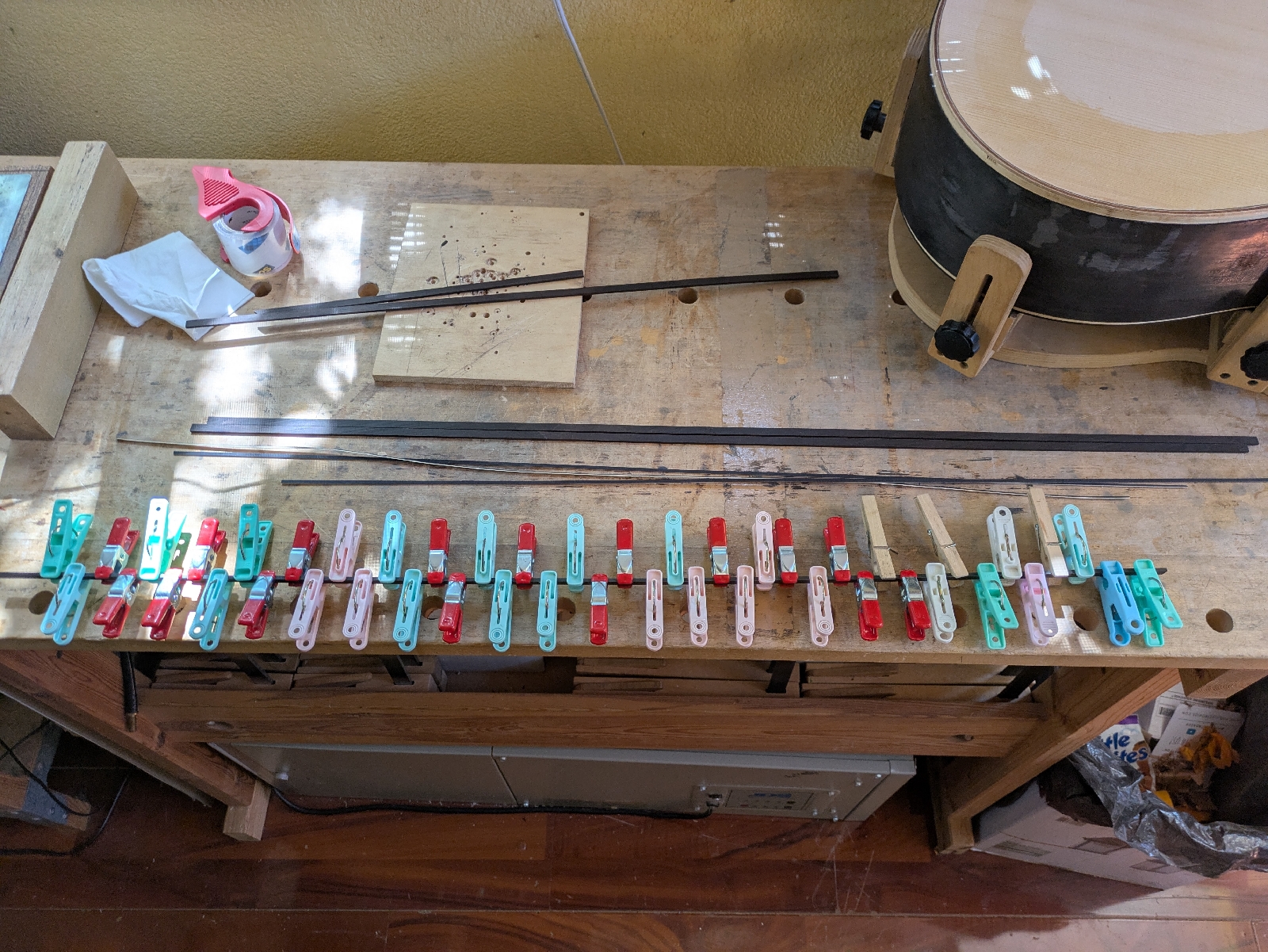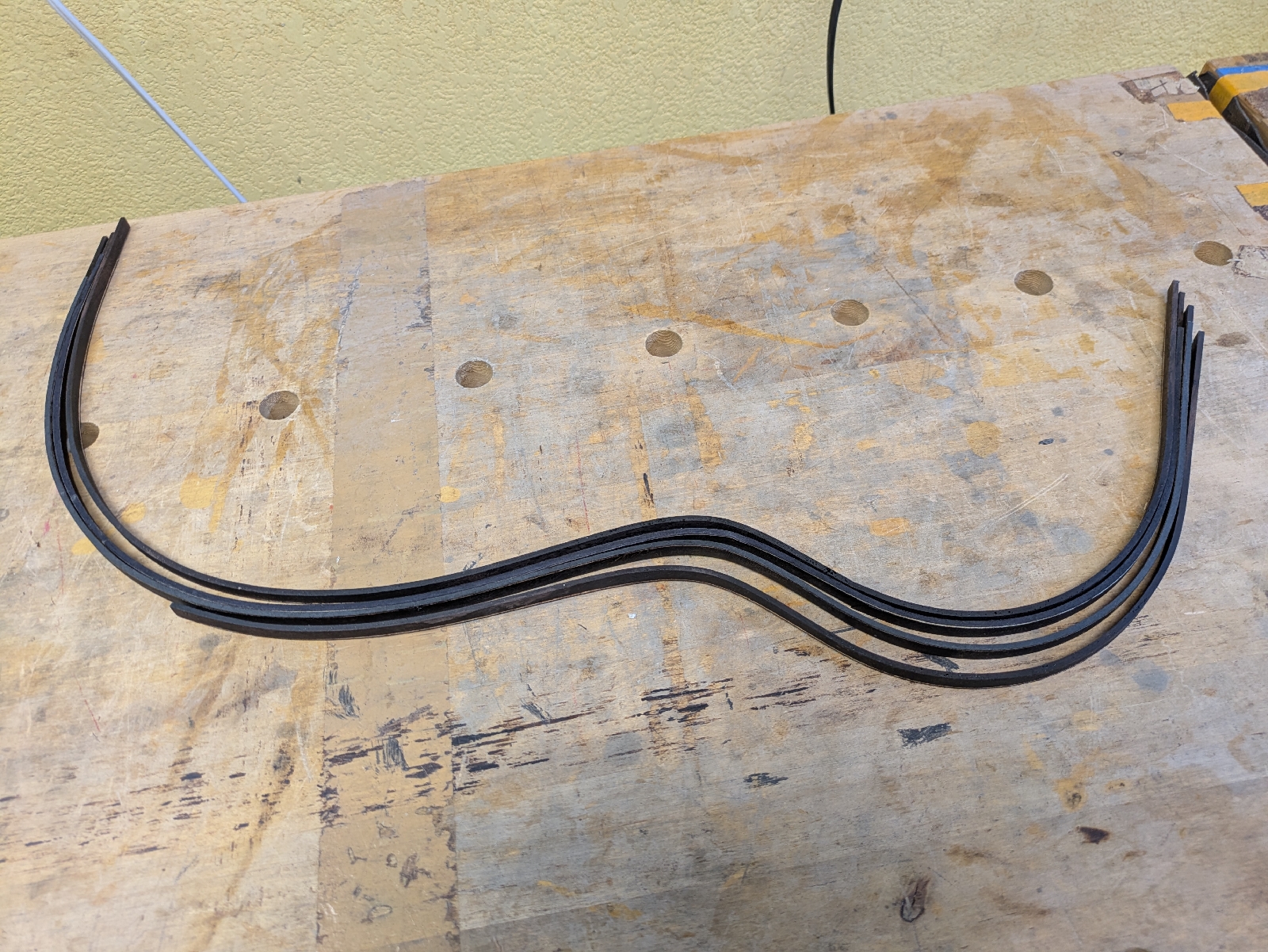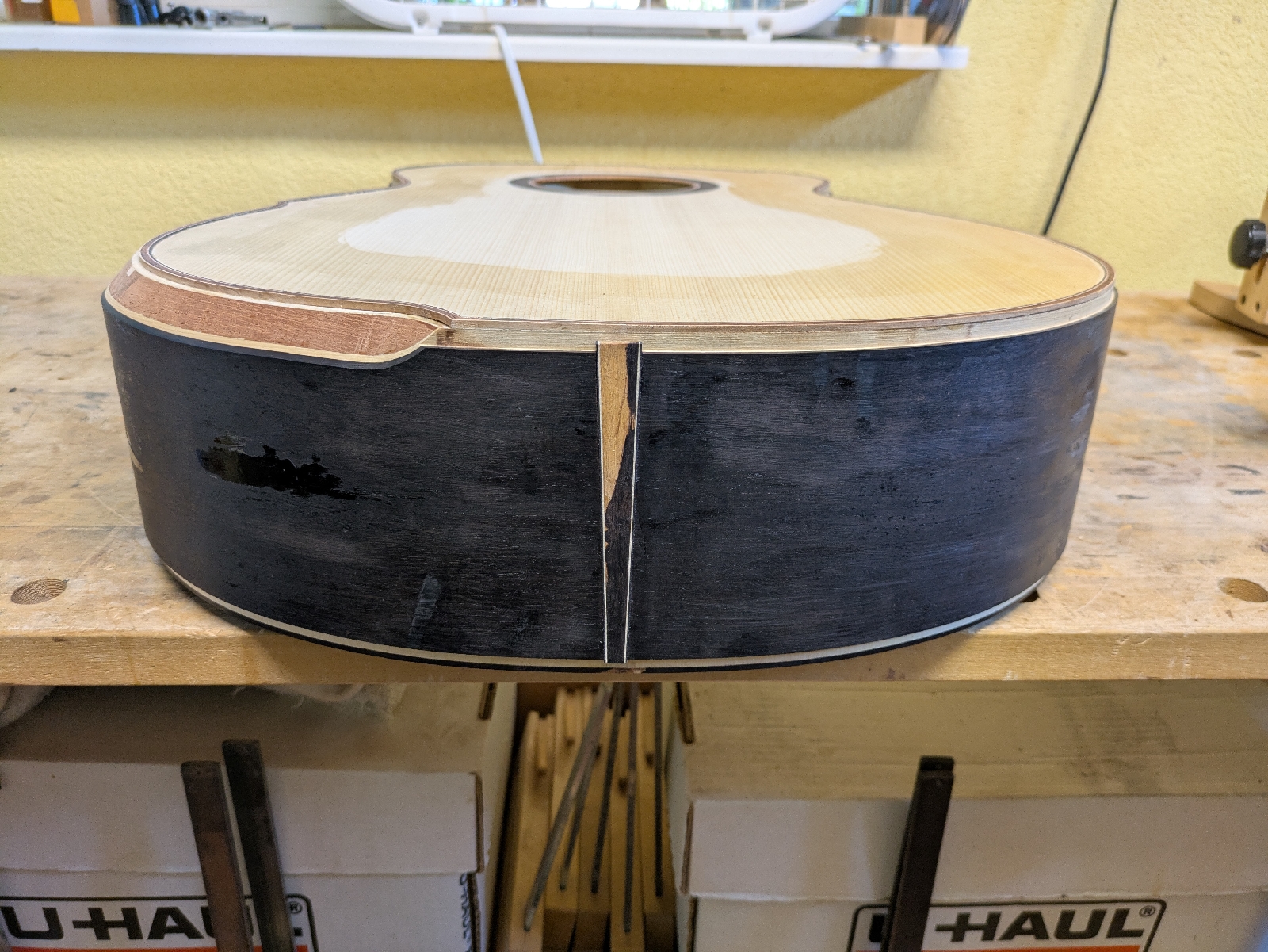I have been using a 1x4" and approximately 7' long flat sawn mahogany or Spanish cedar. Believe or not, those expensive neck wood are solid floor materials, and you can buy cheap . Three piece laminate neck becomes one piece equivalent integrity at the heal section. I can make a nearly perfect quarter sawn neck. Also, the three piece configuration is much stronger and stabler than one piece neck. My neck has two carbon fiber reenforcement rods and a double action truss rod. My neck has a truss rod access tonnel made by Brazilian RW. This makes a perfect contact between the nut and the neck.
I completed a 25.4" scale slotting for a Brazilian RW fingerboard. This is a donated material from my long lasting friend. This Brazilian RW finger board was cut for late Taku Salasita's project. The MD model design is based on the Taku's blue print. Whenever I make the MD model, I remember Taku. That is why I selected this material. I never forget a grate guitar maker, and menter of my guitar making late Taku Sakashita.























